Meet the correlation between the collapse of an investment bank and the shutdown of an ascending MMO.
 Art by Alvaro Tapia and Lukas Thelin
Art by Alvaro Tapia and Lukas Thelin
Clique aqui se estiver procurando pela verso em Portugus
Virtual worlds are fascinating mirror images of our complex and at times messy real world society. Some even have real-money economies such as Entropia Universe?s.
Understanding the journey taken by a game development team creating a virtual world, including their failures and victories, provides insight into the challenges of success with MMOs.
Unfortunately, not all virtual worlds gets their development history immortalized on the internet, regardless of how memorable and unique they might have been. Many of them live on in the memory of their users but never have their stories told. Spineworld is one such example, a fantasy MMO created in 2008 featuring a breathtaking art style and soundtrack, which provided an incredible ambiance.
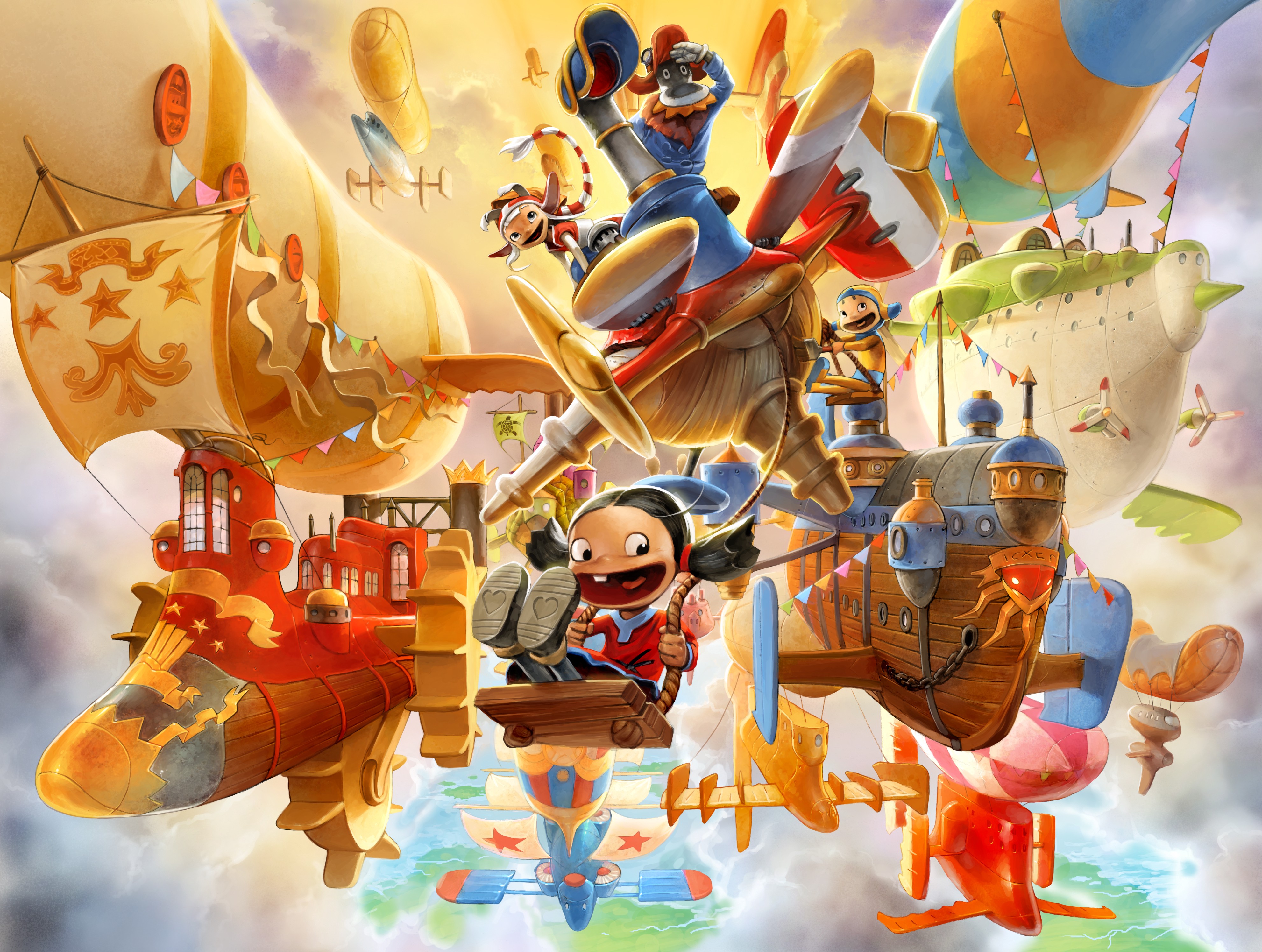 Art by Alvaro Tapia and Lukas Thelin
Art by Alvaro Tapia and Lukas Thelin
The history behind Spineworld?s development is very intriguing. While limited information exists, including pictures and videos of the game, no one has uncovered what I consider to be the biggest mystery: why the world had to be adapted and shutdown.
The lack of information about the game as well as its demise was personally unsettling. That motivated me to dig into their history, and with the support of multiple communities and help from the development team, I can now share what I have learned.
The following is what I uncovered working with the members of the now dismantled development team and the scattered remains of their biggest fans still singing the praises of this MMO.
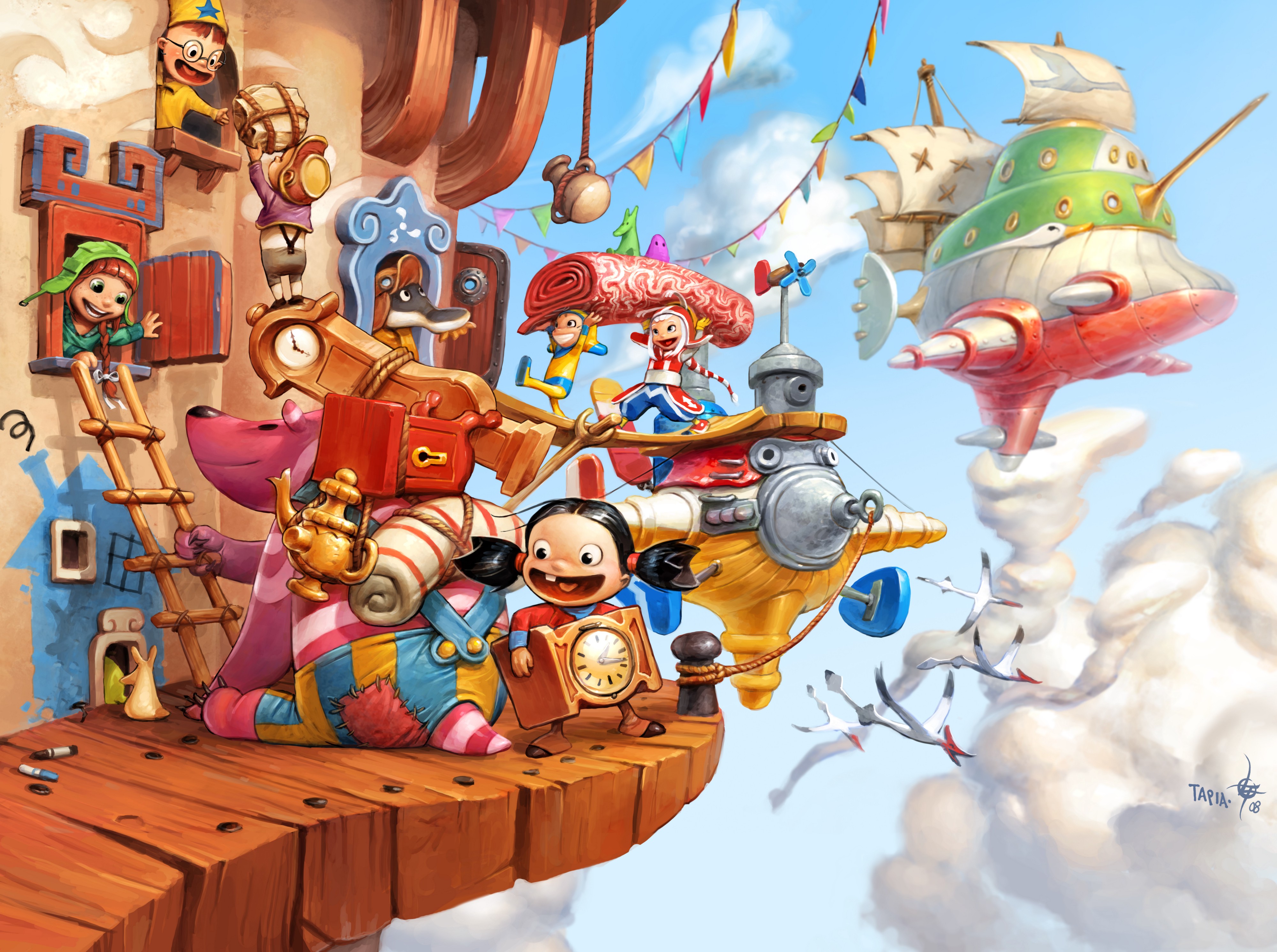 Art by Alvaro Tapia and Lukas Thelin
Art by Alvaro Tapia and Lukas Thelin
Playdo Community and Playdo 1.0
It all started in 2000, when Playdo AB, a Swedish company founded by Andreas Rehnberg, published a website named Playdo Community. They presented themselves as a production company specialized in interactive communities, mobile services, and multiplayer online games. The website allowed users to access products such as the Playdo Community and Playdo City, their graphical chat world, known today as Playdo 1.0.
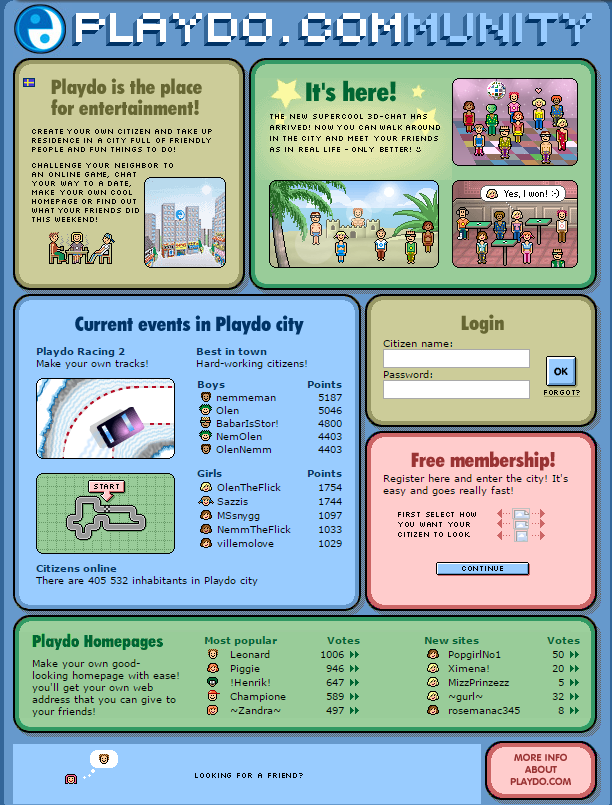 Other than granting access to Playdo City, Playdo Community also allowed users to create their homepages and challenge each other in minigames such as Playdo Racing 2
Other than granting access to Playdo City, Playdo Community also allowed users to create their homepages and challenge each other in minigames such as Playdo Racing 2
Despite the simple graphics, Playdo City attracted a meaningful amount of players. Right after joining the chat, players could find themselves in the main lobby, where they could interact with other users and access other rooms. You could choose between a cafe, a basketball court, a log cabin, an ice skate rink, and a nightclub ? which according to the players, was very busy late at night.
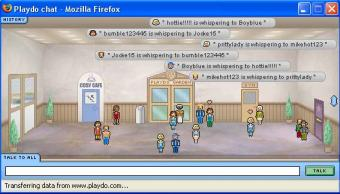
In response to the success of Playdo 1.0 and Playdo Community, innovation strategist Donnie SC Lygonis teamed up with Andreas Rehnberg in 2005 to develop Playdo 2.0, launched in 2007.
Playdo 2.0

Playdo 2.0 benefited from talented artists such as Alvaro Tapia, Lukas Thalin, and Emanu Garnheim. That allowed the new version of the virtual world to introduce much more attractive and memorable graphics than Playdo 1.0. All main features (such as profile pages) from Playdo Community were also available, with new tools. During the transition stage, Playdo 1.0 remained available to users so they could take their time.
The graphical chat world evolved and earned a new name: Spineworld. Rather than just exploring minimalist and small rooms, now players could further customize their characters and interact in new ways. It was possible to notice a bigger world taking place, with new ambitions and a lot of potential to grow.
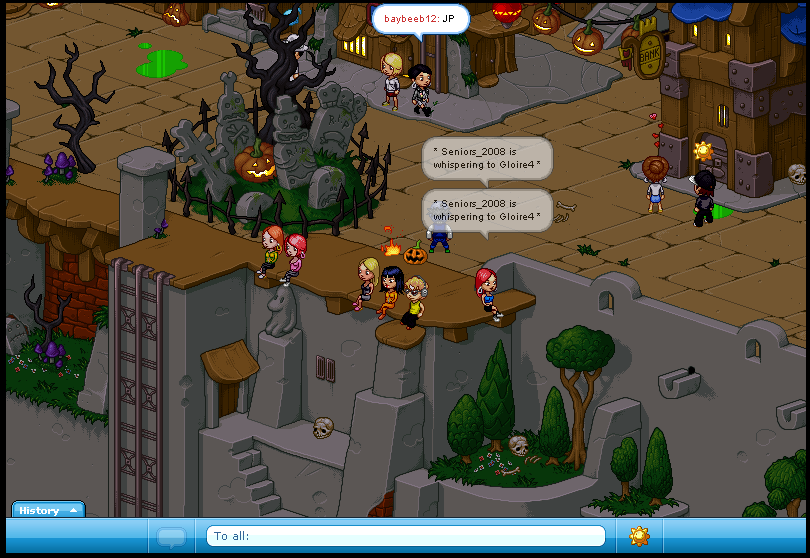
It was not long before Miniclip, a giant publisher of browser games in 2000, noticed such potential and decided to support it. I had the pleasure to talk with Lygonis and get more information about this meaningful period in the history of Playdo.
?We then got Miniclip onboard as an investor and on their recommendation decided to shift focus to only the virtual world (close down profile pages and other extras that were in Playdo 2.0)?? Donnie SC Lygonis
Playdo sold the abandoned features of the game to a company named Lulilab, which used them to develop a Scandinavian social network. Meanwhile, Playdo?s success and Miniclip?s financing became news. The financing of 4.3 million dollars represented an exceptional opportunity, as it allowed it to fully take advantage of the potential of Playdo 2.0 ? about to fully become Spineworld in 2008, a fictional universe designed by Michael Stenmark.
The rise and fall of Spineworld
Spineworld was much bigger than Playdo 1.0 and Playdo 2.0. While the second version of the graphical chat world introduced changes that were essential for creating a virtual world, Spineworld consolidated and expanded them, attracting many players.
The development team expanded with the arrival of personalities that were very important to building the game?s ambiance, such as the writer Steven Savile and composer Thomas Huttenlocher. The expansion once again allowed new features, for example, many other ways to interact with other players and the virtual world itself.
?We wrote probably 2?3000 years worth of history and possible places for adventure.?? Steven Savile
 Art by Alvaro Tapia and Lukas Thelin
Art by Alvaro Tapia and Lukas Thelin
One of the new ways to interact, and possibly the one that differentiated Spineworld from competitors the most, was a mission mechanic that introduced players to the lore of the virtual world and its inhabitants. As a reward, players earned clothes and coins to exchange for a diversity of items. According to a presentation made by Donnie SC Lygonis, this mechanic was what defined the virtual world as a game and not as a multi-user virtual environment like Second Life and Habbo Hotel.
 After accepting missions, players could talk with NPCs and search for clues on how to solve them
After accepting missions, players could talk with NPCs and search for clues on how to solve them
Some of these missions required the player to solve puzzles and to teamwork. Other virtual worlds, for example, Pandanda, did explore such mechanics, but never as connected to a plot and its universe. While exploring The Beneath, a series of caves and tunnels, players could come across bizarre creatures and structures with unusual missions.
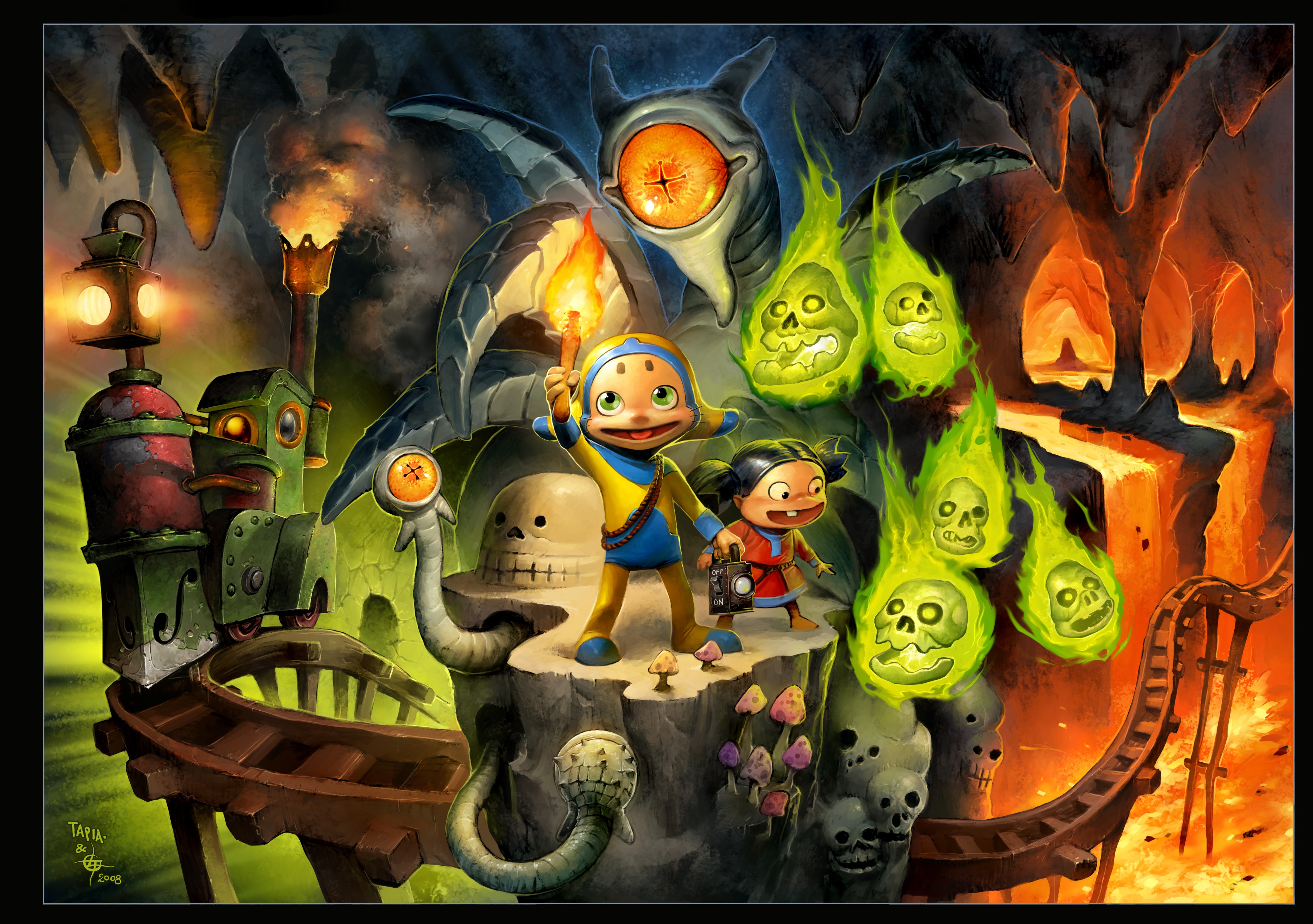 Art by Alvaro Tapia and Lukas Thelin
Art by Alvaro Tapia and Lukas Thelin
Upon completing missions and doing something new around the world, players could also earn collectible badges. These badges awarded the players even more coins and unique hats.
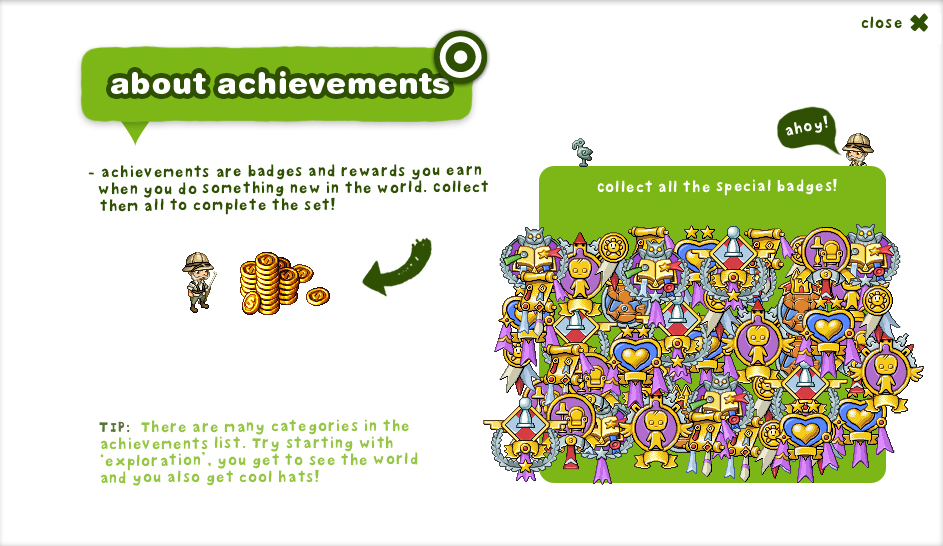
Another interesting point is the way Spineworld ? accidentally or not ? created a busy society. To access the other floors of Cloud Spire (the central city of the virtual world), players had to enter an elevator shared by the entire server. The crowd of players leaving and entering the elevator on each floor was impressive and very memorable.
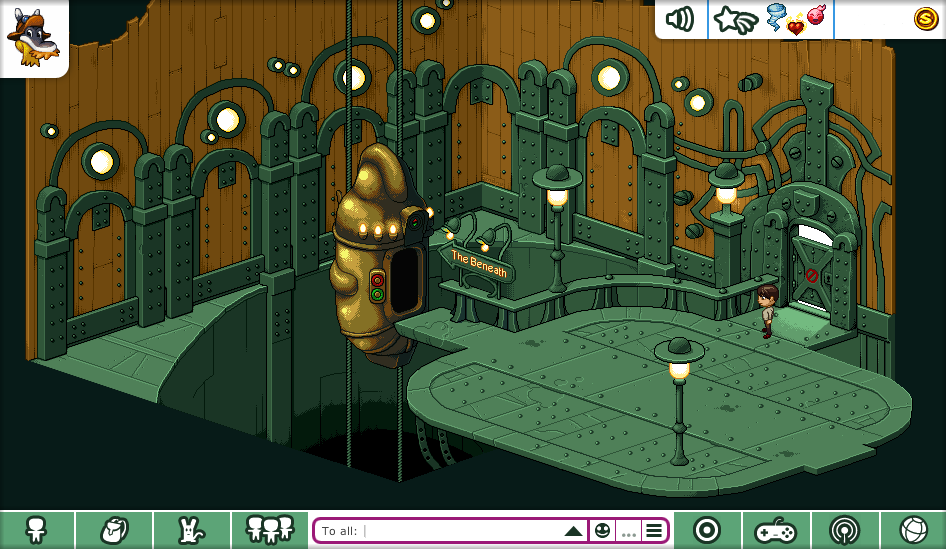
Of course, basic features available in other virtual worlds were also available here. Another way to earn coins and badges was to play minigames scattered in the world or on portable games that players could host and play with one another.
Each minigame had a different theme and gameplay, which ranged from skydiving around Cloud Spire to competitive kart races in the Mayan Jungle. The same applied to portable games, usually consisting ofshort matches of strategy games like Hotep?s Riddle and Gomoku.

Another way to spend the coins earned from missions and badges was raising a pet, which players could choose between four different species available. After achieving a good friendship rate with your pet (through Tamagotchi-like interactions), you could command it to dig and look for items around the world.
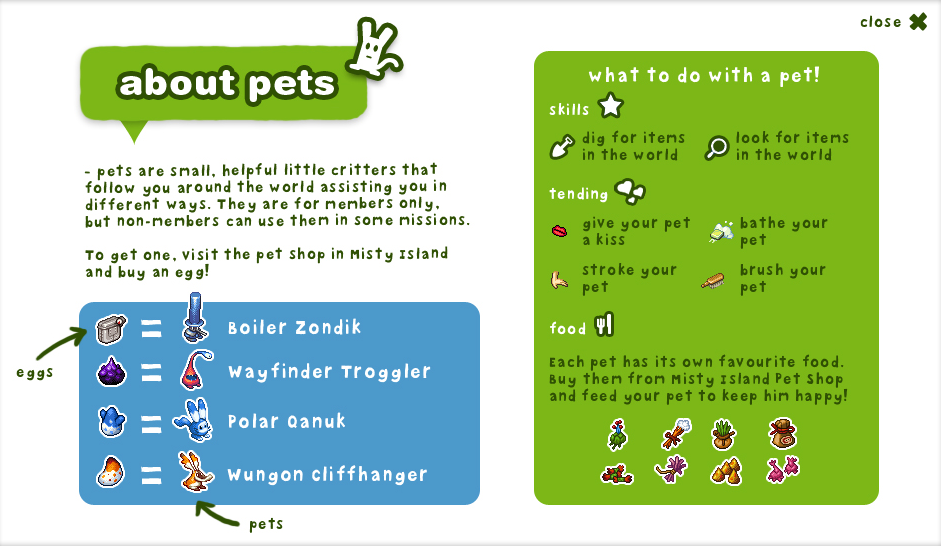
All these features and the way they fit in the universe designed by Michael Stenmerk allowed Spineworld to grow in popularity and become a worthy competitor, eventually reaching the hitherto unbeatable Club Penguin on the Miniclip Popularity Rank. During this period, the team reached around 60 staff members, and there were even plans to develop a mobile version of the game.
?I remember this damned little squawk box thing that chimed and cheered as a new player total signed up. That was right across from my desk and used to drive me out of my mind! *laughs*? ? Steven Savile
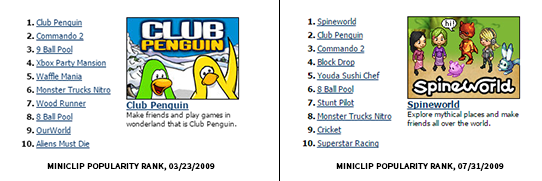
Spineworld?s business model was based on a monthly ?3.95 subscription (allowing players to access member-exclusive rooms and missions) and micro-transactions such as furniture packs, costumes, and emoticons. Even though this model was greedier than Club Penguin?s (where players only had to pay a monthly subscription to access all content), the sales were substantial.
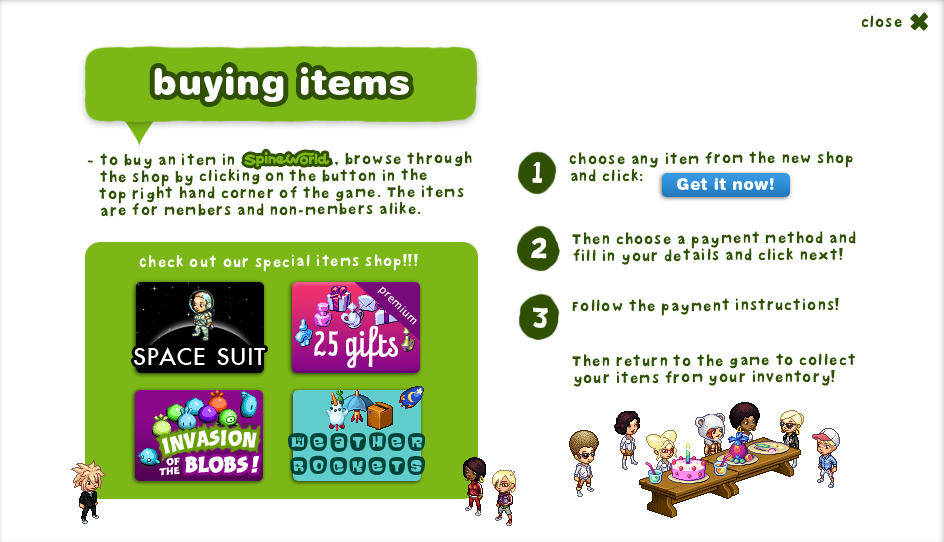
However, no significant amount of sales could protect Playdo from a worldwide event: the financial crisis of 2007?08 caused by the collapse of the investment bank Lehman Brothers. Resulting from the excessive risk-taking by banks, the financial crisis brought recession and unemployment.
?When the financial crisis hit in 2008, Spineworld/Playdo almost went out of business, we never got the 4M in financing.? ? Donnie SC Lygonis
Regardless of how many players the virtual world had achieved, it was time for drastic measures. The first step was a layoff of most of the employees until there were only five team members remaining. Unfortunately, that was not sufficient to save the company. Therefore, Playdo decided to sell Spineworld?s copyright to its holding company, Result.
?I went home one evening, came back the next and the office was reduced to a phantom staff. We had about fifty or sixty people the day before. Art, music, writing departments. Pixel artists, concept artists, programmers?? ? Steven Savile
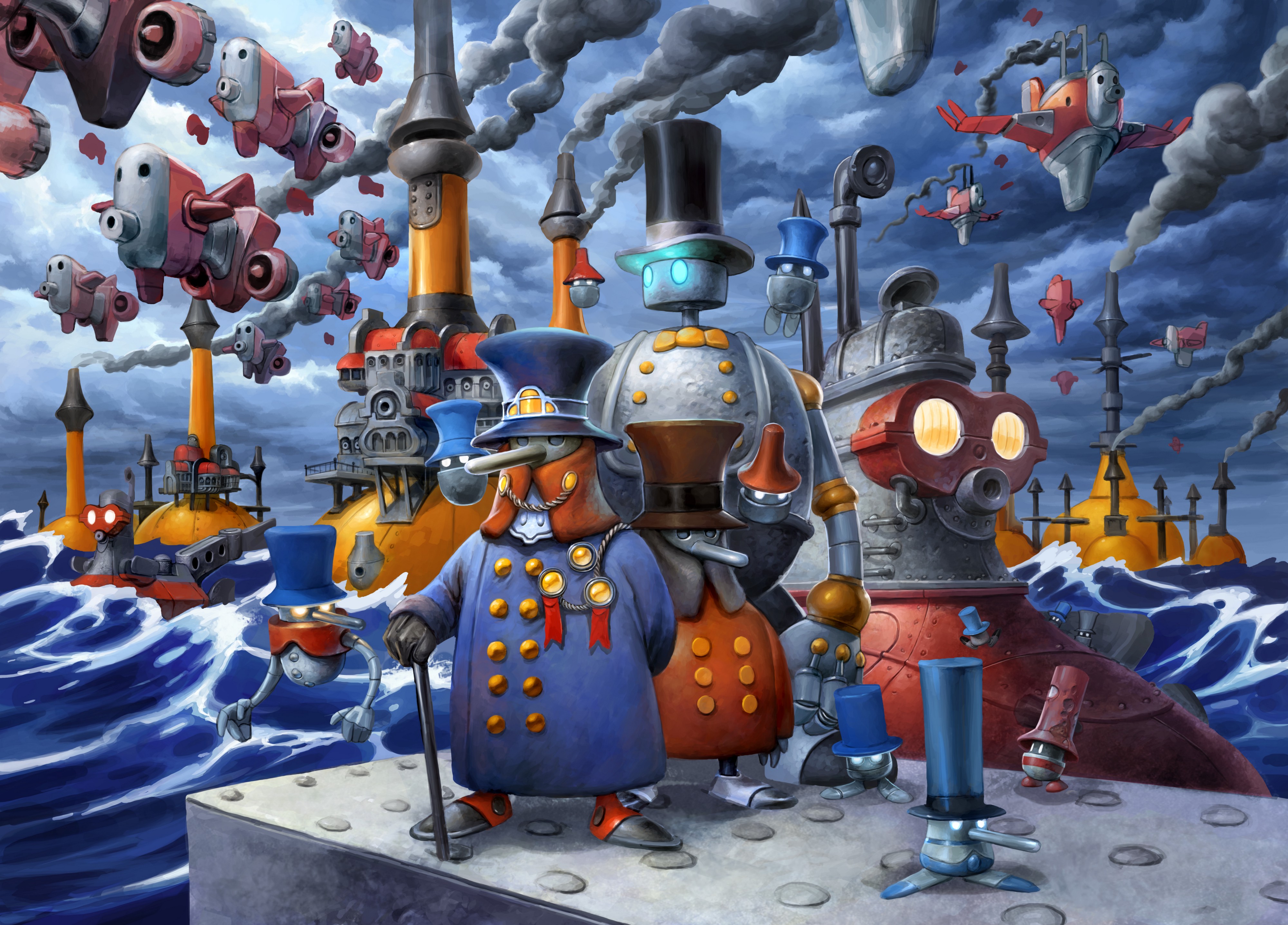 Art by Alvaro Tapia and Lukas Thelin
Art by Alvaro Tapia and Lukas Thelin
Migoland: the last attempt
 Players had their belongings automatically converted to Migoland
Players had their belongings automatically converted to Migoland
After purchasing Spineworld?s copyright, Result proposed monumental changes to the virtual world?s art style intended to appeal to a younger audience. However, these changes in style were incomplete, and many characters and furniture sprites from Spineworld were combined into cartoonish backgrounds that conflicted with the original world design by Michael Stenmark.
The updated game was introduced in 2010 with a new name: Migoland. All the world-building characteristics previously introduced on Spineworld were discarded and replaced by a mundane world, with no storytelling objective. The business model was changed, so players only had to pay the monthly subscription instead of buying item packs.
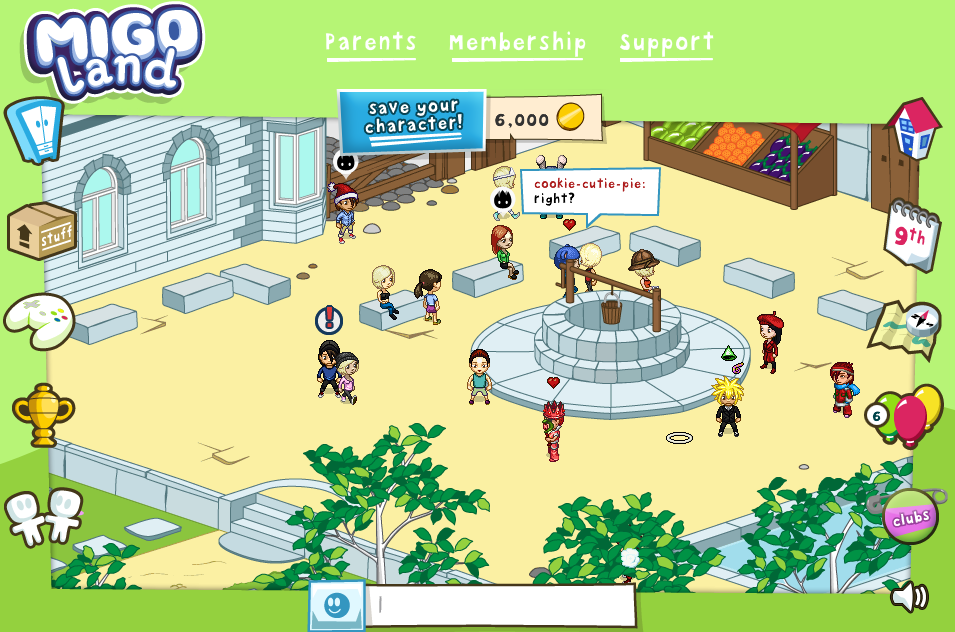
The visual changes, specifically, were disastrous to the virtual world?s popularity. However, there were other flaws, such as lack of room diversity and an extremely restrictive chat filter. Most users decided to immediately leave the virtual world, while others took a little longer but end up doing the same.
In contrast to Spineworld reaching the top of the Miniclip Popularity Rank in July 2009, the launch of Migoland in 2010 made it disappear between its competitors. Even so, Migoland remained active until 2016, when Rehnberg announced the ?temporary shutdown? of the virtual world. Since then, the official website presents a message saying Migoland will soon return.
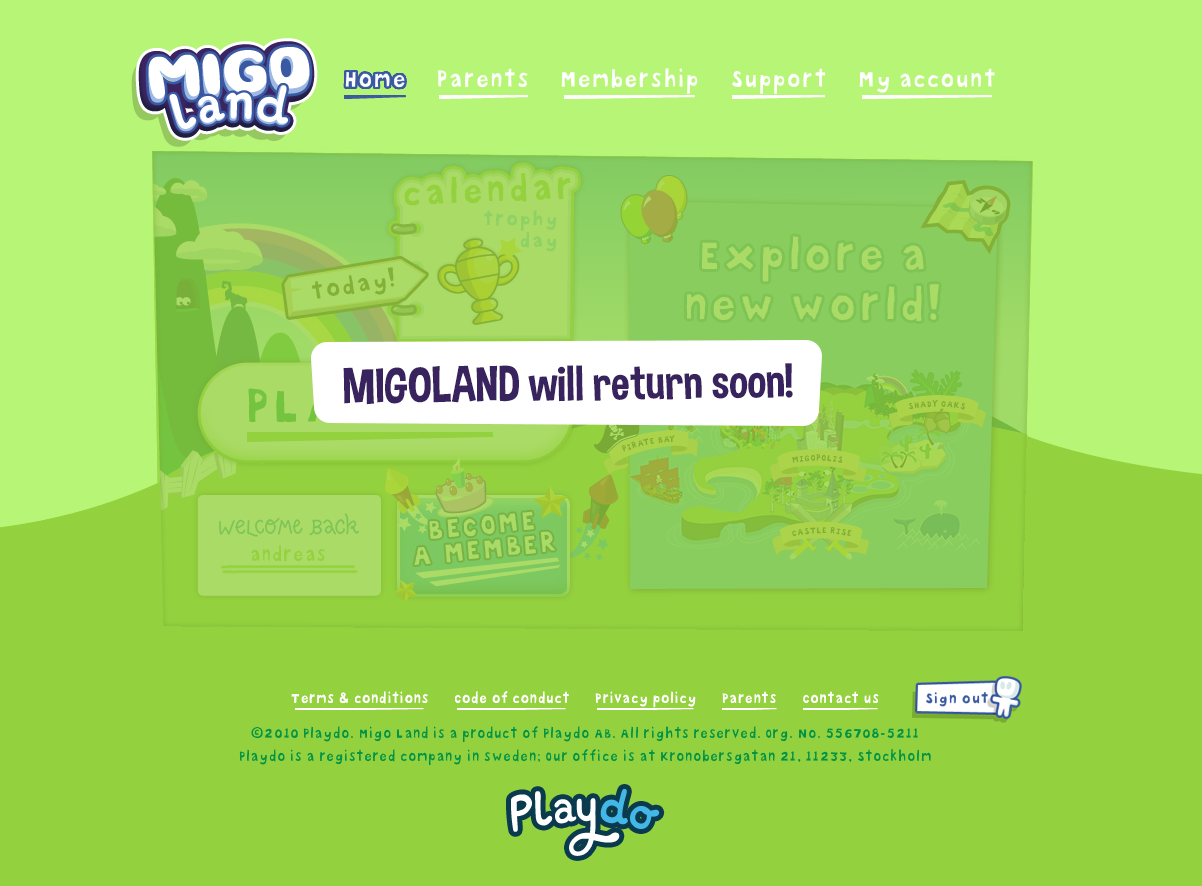
Spineworld as it exists today
Despite what happened, this is not the end of Spineworld?s history. I took advantage of the opportunity to further prod some of the developers on what they have been working on.
Alvaro Tapia
Alvaro Tapia Lagunas, Spineworld?s concept artist, is still creating amazing illustrations and worked on the concept arts of Mad Max and Rage 2 a few years ago. You can find him on his Instagram, where he shares his recent illustrations, as well as on his website and Behance portfolio.
 Art by Alvaro Tapia
Art by Alvaro Tapia
Emanu Garnheim
One of Spineworld?s pixel artists, Emanu Garnheim, started a career on the side as a political cartoonist and revealed having fallen in love with animation thanks to the virtual world, which led him to apply for a Bachelors course in animation at Stockholm University of the Arts. Currently, Emanu works on a personal stop motion project named TERSDD and makes handmade props, the most prolific being the space suits of Sune vs Sune.
Friendbase
Andreas Rehnberg and Donnie SC Lygonis kept working together, creating Friendbase in 2014, a virtual world available on Facebook and mobile devices. Several social features from Spineworld are available on Friendbase, and anyone can try it out anytime.
? We felt the idea of a virtual world for teenagers was worth pursuing, Today it is run by my sister Deborah, and me and Andreas are still on board as advisors and business developers.? ? Donnie SC Lygonis
Lukas Thelin
Lukas Thelin, the artist responsible for Spineworld?s promotional arts and the coloring of the game?s sketches, is currently creating illustrations for the Fenix magazine and board games such as Western. You can check daily updates on his works on his Instagram and visit DriveThruRPG to explore RPGs and books illustrated by him.
 Art by Lukas Thelin
Art by Lukas Thelin
Michael Stenmark
Michael Stenmark, the mind behind Spineworld?s universe, presently works as a project manager on Goodbye Kansas, the studio responsible for producing the highly awarded Cyberpunk 2077 E3 cinematic trailer. On his Instagram, Stenmark shares some of his arts, most of which are part of a personal project named Book of Trolls.
?Spineworld was and is still my brainchild ? It carries my mark as a creator. And I am pretty proud of what we all together brought to the world.?
 Art by Michael Stenmark
Art by Michael Stenmark
Steven Savile
Writer Steven Savile, pseudonym Ronan Frost, writes fantasy, horror, and science fiction for St Martin?s Press. You can find him on Twitter, and White Peaks, one of his latest books, tells the story of a dying tech billionaire that has invested millions chasing miracle cures. Refusing to give up, he gathers a team capable of beating incredible odds and willing to go to the ends of the earth chasing life.

Spineworld Restoration project
In 2012, Spineworld players created a community to restore the virtual world and any content related to it. Several projects with this objective were abandoned over time, but a user named MaouKami found data saved on one of his old computers and managed to restore a 2008 version of the game.
The version available today (managed by MaouKami and Monk) is based on this data. It is possible to access it both online and offline. Currently, the community is still continuing to search for a more recent version of the game. You can learn more about this on a page dedicated to the project.
Special thanks
Thanks to the support of several people, exploring the history of Spineworld became an even more entertaining and engaging journey. I would like to express my gratitude to Alvaro Tapia, Donnie SC Lygonis, Emanu Garnheim, Lukas Thelin, Michael Stenmark, and Steven Savile, part of the Spineworld development team. Moreover, I wish to thank the Spineworld community for their assistance, especially Aristarchius, Monk, and Seraphina.
Throughout the process, I had the pleasure to discover official content never shared publicly, as well as meet and interact with people with common interests. Few things are as exciting as having the purpose of your work validated by people expressing a desire to contribute.
Update: Lukas Thelin shared a big collection of high-resolution official Spineworld artworks. Many of them were never shared publicly before and are related to unreleased content. Please remember the content shared on this Drive is copyrighted by Lukas Thelin, Alvaro Tapia, and Playdo/Result. Therefore, you are not allowed to use anything from it for profit.


